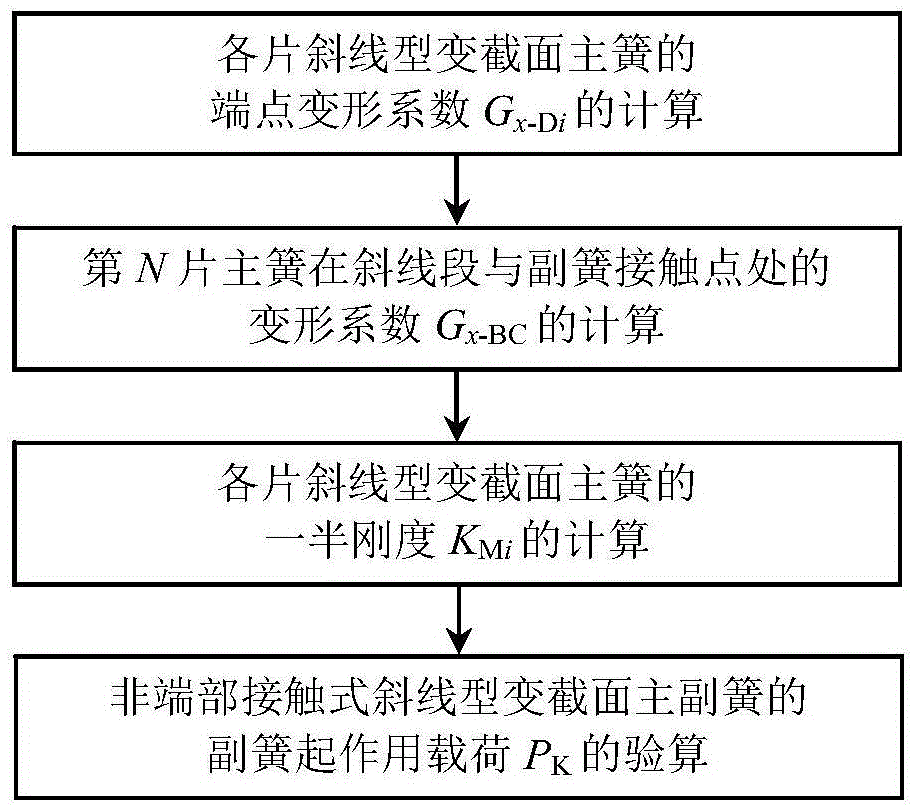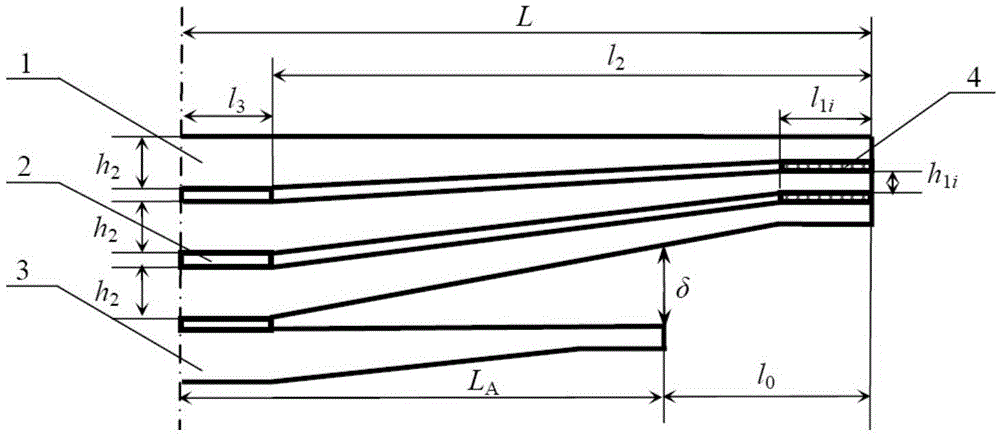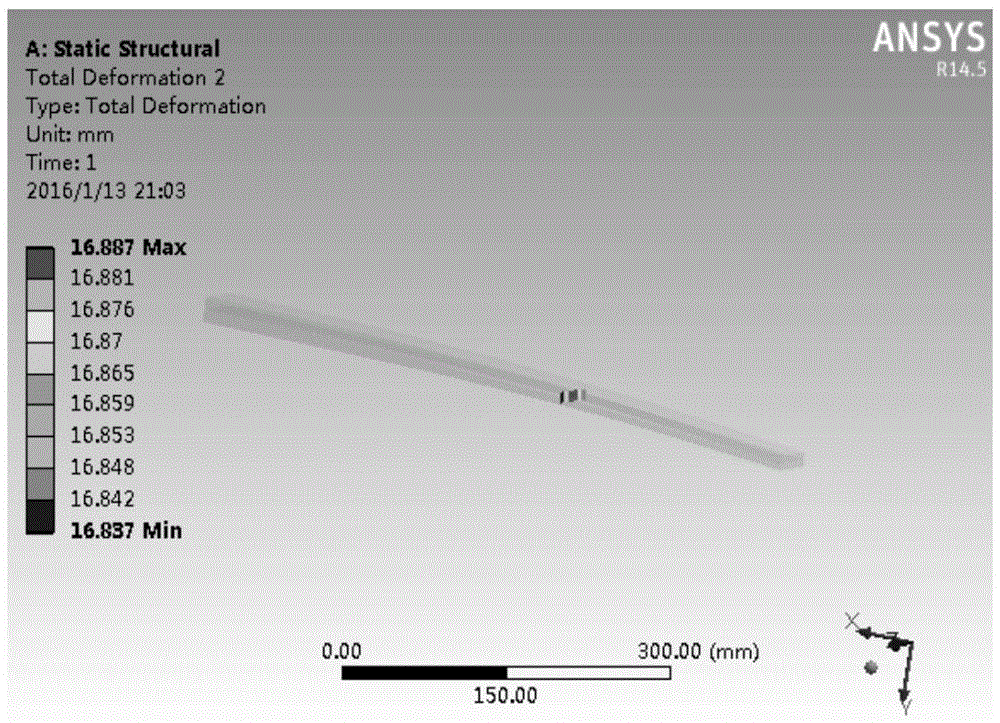Method for checking useful load of auxiliary springs of non-end contact diagonal main and auxiliary spring
A slash-shaped, non-end technology, applied in calculation, special data processing applications, instruments, etc., can solve the problem of not meeting the design requirements of a few slash-shaped variable-section leaf springs, not yet given a checking calculation method, and affecting vehicle driving Smoothness and other issues
- Summary
- Abstract
- Description
- Claims
- Application Information
AI Technical Summary
Problems solved by technology
Method used
Image
Examples
Embodiment 1
[0030] Embodiment 1: The number of main reeds of a certain oblique-line type variable-section leaf spring is N=2, wherein the half length of each main spring is L=575mm, width b=60mm, modulus of elasticity E=200GPa, root thickness h 2 =11mm, half of the installation distance l 3 =55mm, the distance l from the root of the oblique line section of the main spring to the end point of the main spring 2 =L-l 3 =520mm; Thickness h of the straight section at the end of the first main spring11 = 7mm, the thickness ratio of the oblique line section of the first main spring to β 1 =h 11 / h 2 =0.64; the thickness h of the straight section at the end of the second main spring 12 = 6mm, the thickness ratio of the oblique line section of the second main spring to β 2 =h 12 / h 2 = 0.55. Half length L of auxiliary spring A =355mm, the horizontal distance from the secondary spring contact point to the main spring end point l 0 = 220mm, the design value of the primary and secondary sp...
Embodiment 2
[0048] Embodiment 2: The number of sheets of a certain oblique line type variable cross-section main spring is N=2, wherein, half of the length L=600mm of each main spring, width b=60mm, modulus of elasticity E=200GPa, root thickness h 2 =14mm, half of the installation distance l 3 =60mm, the distance from the root of the oblique line section of the main spring to the end point of the main spring l 2 =L-l 3 =540mm; Thickness h of the straight section at the end of the first main spring 11 =9mm, the thickness ratio of the oblique line section of the first main spring to β 1 =h 11 / h 2 =0.64; the thickness h of the straight section at the end of the second main spring 12 =8mm, the thickness ratio of the oblique line section of the second main spring to β 2 =h 12 / h 2 =0.57. Half length L of secondary spring A =340mm, the horizontal distance l between the auxiliary spring contact and the main spring end point 0 =260mm. The design value of the primary and secondary spr...
PUM
| Property | Measurement | Unit |
|---|---|---|
| Half length | aaaaa | aaaaa |
| Width | aaaaa | aaaaa |
| Elastic modulus | aaaaa | aaaaa |
Abstract
Description
Claims
Application Information
 Login to View More
Login to View More - R&D
- Intellectual Property
- Life Sciences
- Materials
- Tech Scout
- Unparalleled Data Quality
- Higher Quality Content
- 60% Fewer Hallucinations
Browse by: Latest US Patents, China's latest patents, Technical Efficacy Thesaurus, Application Domain, Technology Topic, Popular Technical Reports.
© 2025 PatSnap. All rights reserved.Legal|Privacy policy|Modern Slavery Act Transparency Statement|Sitemap|About US| Contact US: help@patsnap.com



